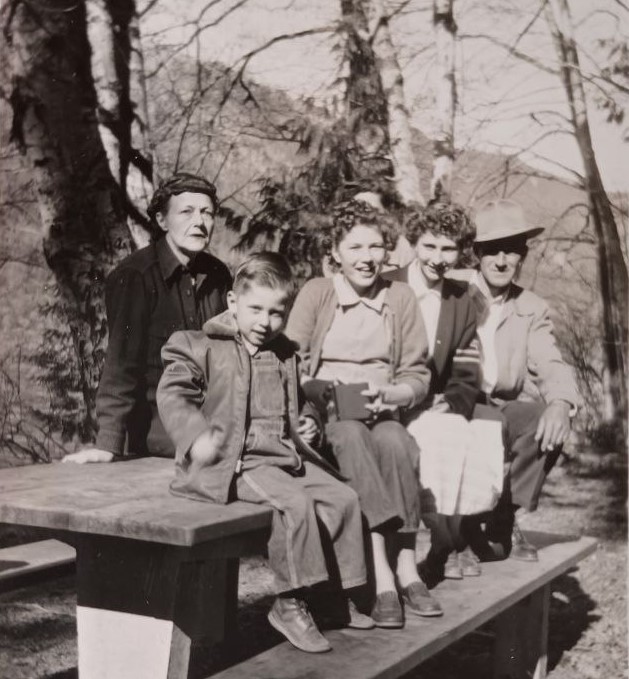The American Family
When we lose the connection with past generations, we lose the part of humanity that brings everything into focus. Too often we hear trite sayings about “the greatest generation,” but what does that really mean, and why should we even care?
To be frank, if we measured ourselves against the men and women of my great-grandparent’s era, we would be found lacking in every area of measure. The men and women born in the early 1900’s were fiercely independent, rugged individuals who built the foundations for every convenience we take for granted today. Their skill sets, ingenuity, dedication, reliability, upright character, mental toughness, and generosity of heart would put today’s generation to shame.
When I embarked on this journey to build a local paper that would echo the values of our community instead of attacking them, I knew a key focus would be to bring to life the stories of the forgotten men and women who built this community, and others like it all across America.
The American Family section of the Kootenai Journal is where you will venture into the lives of remarkable Americans whose names and faces have been forgotten by all but a few lingering souls, but whose impact on our culture and society still endures.
The inaugural story for The American Family originates in Council, Idaho, where my great-grandfather, Paul James Kesler was born on August 12, 1911, to Edna (Spangler) Kelser and John Kelser.
For those who fell asleep in history class, 1911 was six years before America entered what would be known as The Great War, a war to end all wars, as they say. By the time Paul was thirty-four years old, he witnessed America’s involvement in both the first and second world wars.
Raised on a homestead in Council, Idaho, with two brothers and two sisters, Paul lived the day-to-day life of subsistence living, something hard for most of us to wrap our heads around, and he ended school after eighth grade to work the family farm.
At twenty years of age, Paul wed a young woman whose family had moved to town when she was eleven years old. My great-grandmother, Margaret (Wheeler) Kesler, shared stories of how Paul’s childhood teasing turned to teenage whistles as he would drive past, which left her father to exclaim, “He’s the devil on wheels!” Despite my great-great-grandfather’s disapproval, Margaret eloped with Paul to Vale, Oregon, where a justice of the peace married them on November 9, 1931.
The 1930s were a desperate time for many and it was not uncommon to find multi-generational living arrangements. This was the case with my great-grandparents, as they settled into the upstairs of Margaret’s parents house in Council, Idaho. Margaret’s first pregnancy was beset with illness, requiring her confinement for smallpox and the near loss of her child. Margaret was quoted in the Adams County Leader saying, “I came down with smallpox, which they thought would surely finish causing me to lose the baby, but with Mother’s nursing and a good Doctor, we both came through alright.”
Ten weeks later, on June 29, 1933, Margaret and Paul welcomed their first child, a healthy baby girl, whom they named Pauline Evelyn Kesler, my grandmother. As was typical of this era, it was a home birth with my great-great-grandmother Lula (Williams) Wheeler acting as midwife to the doctor. Labor and delivery wards were unheard of in 1933.
The family grew and two more daughters were born. Paul worked tirelessly to provide for his growing family during the depression, including manual labor that involved digging ditches, graves, and cesspools. In 1937, Paul moved his family to Port Angeles, Washington, where he worked in logging at the ITT Rayonier Mill. It was a brutal work economy and jobs were hard to come by. On his way into the mill, Paul would pass hundreds of men lined up outside hoping to find work. A son was born in 1947, and this completed the Kesler family.












According to my grandmother Pauline, “Mom was an extension of Dad. He was the boss. Mom wasn’t allowed to work and was tasked with the care of the home, canning food, cooking, and raising the children.” Margaret had a keen mind and managed the family finances without credit cards or a calculator.
In reality, Margaret worked, she just wasn’t compensated with US dollars. She learned to read blueprints and was a team with Paul in his construction business. They built and remodeled homes, and Paul earned a stellar reputation for quality and integrity. He eventually worked for Del Guzzi Construction, retiring after twenty-five years. Near the end of his career, he completed one of his greatest accomplishments, managing a huge renovation at the old ITT Rayonier Mill, the very place that had brought him to Port Angeles 37 years before. This was my great-grandfather’s final project and became a historical one, with the twenty-two story building being the tallest on the Olympic Peninsula.
During the years of Paul’s dedicated work at Del Guzzi Construction, Margaret ushered her four children into adulthood. Her days were filled with the work that goes into caring for and sustaining a family in the days before cheap industrial clothes and ready-to-go meals. She tended a large garden, kept the family clothed by sewing, cooked three meals a day, and preserved food. Margaret was very artistic, she drew and painted pictures before child-rearing consumed most of her energy. Some of her sewing was very intricate, including altar clothes which had many tiny stitches per inch.
Both Paul and Margaret smoked, having picked up the habit early as part of the culture in their youth. But when my great-grandfather caught his daughter Pauline smoking as a young teen, he cured her “quick, fast and in a hurry” by making her smoke a full cigar. My grandmother never smoked again.
“Dad drank beer in the summer and whiskey in the winter,” shared Pauline. The family camped and fished regularly as entertainment, rowing across Lake Mills to set up remote campsites. “Dad hunted too, this was a time you lived off what you grew, caught, and shot. Mom grew berries, made jams and jellies, and canned everything possible.”
My grandmother Pauline described how frozen food was kept in downtown lockers, which were rented for locals to store meat in to keep their families fed throughout the year. “We had ration stamps during the war and some things were unavailable, like silk stockings.”
“Once I was fit-to-be-tied that I didn’t have the newest fashion,” reminisced my grandmother about growing up. “Dad had no tolerance for vanity and bluntly stated, ‘Well, I guess you were born in the wrong family, young lady.’”
My great-grandparent’s first home came fully furnished with a piano and record player for only $3,000. Everything was done on a cash basis, no borrowing. As money became available, that is when repairs were made. Home phones were rotary dial type and serviced by party lines, which meant all the other homes sharing the phone line knew everybody’s business. The luxury of sewer hookups had not reached the poorer neighborhoods, and each family in the area had “their own cesspool for refuge,” which was a big pit with rocks fed by piping coming from the house.
It would be a whole lot easier to do it myself, but if I did it for you, you wouldn’t learn a thing.”
Paul James Kesler 1911-1983
Throughout the years, Paul and Margaret played cards and went dancing for fun. In retirement, my great-grandparents never stopped working a garden. During their 50th year of marriage, Paul grew 400 pounds of potatoes and 250 pounds of beans. Margaret returned to her artistry of ceramics, crafting a beautiful cream pitcher and bowl that sits on a credenza in my home.
The biggest upset to the flow of life came in 1961 with the sudden death of their youngest daughter’s husband. The tragedy left LaVerne (Kesler) Culp a young widow with an infant son and toddler daughter. She returned to her family home after the death of her husband, and my great-grandfather took it upon himself to be a surrogate father. Paul’s fathering of his grandchildren endured for the next thirteen years, until LaVerne remarried and set up a new home. It was a life changing circumstance for all of them.
“I never thought I would see my dad profess Christ,” shared my grandmother. “When I met your grandfather and chose to follow Christ, I thought I could save my whole family. Dad was not impressed with my newfound cause and told me there would be no preaching in his house.”
But many years later when it came time to baptize the grandchildren he would help raise, LaVerne wanted him to be their godfather. Both LaVerne and Margaret were members of the Episcopal Church, and it was required of the godparents to profess a belief in Jesus Christ and be baptized. Paul showed the depth of his love and commitment to his family when he chose to accept the Lord in order to be able to guide his young grandchildren in the faith.
Paul had always lived his life with the principles of Christianity, being a man of his word, humble in his pursuits, generous with his time, faithful in his provision and care of his wife and family, and holding an unshakable moral code. But it wasn’t until he was fifty years old that he became a professing Christian.
“Dad never lied and he did not tolerate liars,” Pauline stated. “He was respected as a man who never asked anyone to do anything he wouldn’t do.” Paul was a strict disciplinarian, and didn’t ease up for the next generation. His grandchildren would learn that if he asked for an account of your actions, you better have a good reason for doing whatever it was that caught his attention. If they heard, “What the Sam Hill” or “Dad burn me” it was a sure sign he was going to get to the bottom of the situation.
Don’t say anything behind someone’s back you wouldn’t say to their face.”
John James Kesler 1911-1983
Paul died on November 20, 1983, having given his best to this world. Margaret’s earthly life ended soon after on April 17, 1984. All four of their children are still alive. My grandmother Pauline (Kesler) Dooley is now 90 years old with three children, 14 grandchildren, and 65 great-grandchildren. She regularly visits with her sisters, Edna (86) and LaVerne (85), and her brother Paul (76).
In any situation, always be yourself”
John James Kesler 1911-1983




